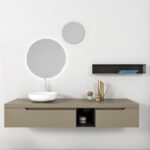If you’re running an online store using Magento, one of the most critical decisions you’ll need to make is choosing the right hosting plan. Magento is a resource-intensive platform, and choosing the wrong hosting plan can result in poor site performance, security issues, and even site downtime. In this article, we’ll provide a comprehensive guide to help you choose the right Magento hosting Australia plan for your business needs.
Understanding Magento Hosting
Before we dive into the details, let’s start by defining what Magento hosting is. Simply put, Magento hosting refers to the type of hosting plan that’s optimized for Magento-based websites. When choosing a hosting plan for your Magento site, you’ll typically have three options to choose from: shared hosting, VPS hosting, and dedicated hosting.

Shared Hosting
Shared hosting is the most basic and affordable option for hosting a Magento site. With shared hosting, you share server resources with other websites hosted on the same server. While this makes shared hosting an affordable option, it also means that your site’s performance can be affected by other sites on the same server.
VPS Hosting
VPS (Virtual Private Server) hosting is a step up from shared hosting. With VPS hosting, you still share a server with other websites, but each site is allocated a specific amount of resources that are dedicated to it. This means that your site’s performance is less likely to be affected by other sites on the same server.
Dedicated Hosting
Dedicated hosting is the most powerful and expensive hosting option for Magento sites. With dedicated hosting, you get an entire server dedicated to your site, which means that you have complete control over the server’s resources. This makes dedicated hosting the most reliable option for high-traffic Magento sites.
Pros and Cons of Each Hosting Type
Each hosting type has its own pros and cons, and the right choice for your business will depend on your specific needs and budget.
- Shared hosting pros: Affordable, easy to set up and manage, suitable for low-traffic sites.
- Shared hosting cons: Poor site performance due to shared resources, limited scalability, security risks.
- VPS hosting pros: More resources and flexibility than shared hosting, better performance than shared hosting, customizable.
- VPS hosting cons: More expensive than shared hosting, technical expertise required to manage, limited resources compared to dedicated hosting.
- Dedicated hosting pros: Complete control over server resources, high performance and reliability, highly customizable, suitable for high-traffic sites.
- Dedicated hosting cons: Most expensive hosting option, requires technical expertise to manage, overkill for small sites.
Factors to Consider When Choosing a Hosting Plan
When choosing a hosting plan for your Magento site, there are several factors that you should consider:
- Website traffic: The amount of traffic your site receives will determine how much server resources you need.
- Resource requirements: Magento is a resource-intensive platform, so you’ll need to make sure that your hosting plan can support the platform’s requirements.
- Growth potential: If you’re planning to scale your business in the future, you’ll want to choose a hosting plan that can accommodate your growth.
- Business goals and priorities: Consider your business goals and priorities when choosing a hosting plan. For example, if your priority is security, you’ll want to choose a hosting plan with strong security features.
- Budget: Hosting plans can vary significantly in price, so you’ll want to choose a plan that fits within your budget.

Assessing Your Business Needs
Before you start researching hosting providers and plans, you’ll need to assess your business needs to determine what kind of hosting plan will work best for you. If you encounter any issues with Magento hosting, seeking assistance from a Magento development company can be a helpful solution.
Determining Your Website’s Traffic
The first step in assessing your business needs is to determine your website’s traffic. This will give you an idea of the amount of server resources you’ll need. There are several tools available that can help you track your website traffic, such as Google Analytics.
If you’re just starting out and don’t have any traffic data yet, you can estimate your traffic based on your business goals and marketing strategies. For example, if you’re planning to run a social media advertising campaign, you can estimate the amount of traffic you’ll receive based on the size of your target audience.
Identifying Your Resource Requirements
Magento is a resource-intensive platform, and your hosting plan will need to be able to support the platform’s requirements. Some of the key resources you’ll need to consider include:
- CPU: Magento requires a significant amount of CPU resources to run smoothly.
- RAM: The more RAM your server has, the better your site’s performance will be.
- Storage: Magento sites can require a lot of storage space, especially if you have a large product catalog.
- Bandwidth: The amount of bandwidth you’ll need will depend on your website traffic and the size of your website files.
When researching hosting plans, make sure to check the provider’s resource allocations to ensure that they meet Magento’s requirements.
Considering Your Growth Potential
If you’re planning to scale your business in the future, you’ll want to choose a hosting plan that can accommodate your growth. This means choosing a plan that’s scalable and flexible, and that can handle increased traffic and resource requirements.
When researching hosting plans, look for providers that offer easy scalability options, such as the ability to upgrade to a higher tier plan or add additional resources as needed.
Prioritizing Your Business Goals and Priorities
When choosing a hosting plan, it’s important to consider your business goals and priorities. For example, if your top priority is security, you’ll want to choose a hosting plan that includes strong security features, such as SSL certificates, firewalls, and regular backups.
Other factors to consider might include:
- Site speed: If site speed is important to your business, look for a hosting plan with fast servers and optimized caching.
- Customer support: If you anticipate needing a lot of technical support, look for a hosting provider with responsive and knowledgeable customer support.
- Ease of use: If you’re not very technical, look for a hosting provider with a user-friendly control panel and easy-to-use features.
Setting Your Budget
Hosting plans can vary significantly in price, so it’s important to set a budget before you start researching options. Keep in mind that the cheapest option isn’t always the best, and that investing in a high-quality hosting plan can pay off in the long run through improved site performance and fewer technical issues.
Researching Hosting Providers
Once you’ve assessed your business needs, it’s time to start researching hosting providers. Some of the key factors to consider when researching providers include:
- Reputation: Look for providers with a strong reputation for reliability and quality.
- Customer support: Check reviews and ratings for customer support, and look for providers with responsive and knowledgeable support teams.
- Performance: Look for providers with fast and reliable servers and optimized caching.
- Security: Look for providers with strong security features, such as SSL certificates, firewalls, and regular backups.
- Features: Look for providers that offer features that are important to your business, such as easy scalability options or a user-friendly control panel.
Conclusion
Choosing the right hosting plan for your Magento site is a critical decision that can have a significant impact on your site’s performance, security, and reliability. By assessing your business needs, researching hosting providers, and considering factors such as website traffic, resource requirements, growth potential, and budget, you can find a hosting plan that meets your unique needs and priorities.
When selecting a hosting provider, make sure to do your research and compare options to ensure that you’re getting the best value for your investment. Keep in mind that a high-quality hosting plan can provide long-term benefits for your business, such as improved site performance, better SEO rankings, and increased customer trust.
Ultimately, the key to choosing the right Magento hosting plan is to take a strategic and thoughtful approach. By carefully assessing your business needs, researching providers, and weighing the pros and cons of different options, you can find a hosting plan that sets your business up for success both now and in the future.







